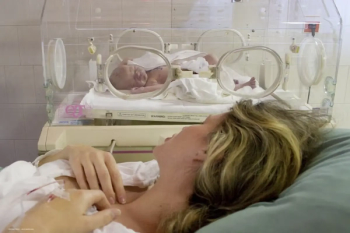Corneal pigmentation, known since the ancient times of Galen and Aetius, has made a historical evolution towards the accomplishment of the solution to severe ocular deformations leading to cosmetic disability.
Since those times, not much progress happened until the 20th century, beginning with Dr Samuel Lewis Ziegler in the US with his thesis to the American Ophthalmological Society and, later, with scientific studies performed in Alicante by myself and colleagues. This research led to a tremendous recent development in this surgical approach that is able to transform the life of severely disabled people due to cosmetic disabilities.
Recently, I served as editor for the second edition of the book Text and Atlas on Corneal Pigmentation. This book was preceded by the success of the first edition and, 10 years later, incorporates the major developments that have been accomplished by this technique for the cosmetic corneal surgeon. Corneal pigmentation can be performed for cosmetic or therapeutic purposes,1 for functional disabilities such as aniridia, colobomas, Urrets-Zavala syndrome or albinism (Figures 1 and 2).
This method has been applied for the first time by my team for voluntary change of the natural colour of the eye. I first described cosmetic pigmentation in 2016 in a series of patients with a follow-up of several years.
Keratopigmentation frequently asked questions
What is keratopigmentation and how is it used?
Keratopigmentation constitutes a well-developed group of surgical techniques used for cosmetic-therapeutic, cosmetic-functional and purely cosmetic purposes (cosmetic cornea).
Does keratopigmentation have applications beyond cosmetic eye colour changes?
Yes, there is scientific evidence in favour of the therapeutic indications.
Why is there controversy around keratopigmentation?
There are purely cosmetic indications, which are controversial and without long-term evidence of the outcomes. The corneal pigments used in keratopigmentation are still limited, and need to be to be further developed.
Later on, the development of new pigments, new instruments and new techniques made intralamellar and superficial keratopigmentation sophisticated, flexible techniques to be applied in many therapeutic cases. While therapeutic keratopigmentation is indeed supported by a high number of consistent scientific publications,2-26 cosmetic keratopigmentation has not yet reached popularity.
The changes in the composition and density of the pigments described keep this elective cosmetic corneal surgical approach controversial. Its controversial nature is heightened by medical-legal implications, as iris recognition is not possible in these eyes.
The new edition of this book focuses on different techniques used for corneal pigmentation, as well as the instruments used for therapeutic superficial keratopigmentation (and also for intralamellar dissection of the cornea). The superficial, intralamellar and combined techniques are described as well as those techniques combining other treatments or comorbidities such as glaucoma, squint and other oculoplastic abnormalities.
My team’s aim was to create a kind of encyclopaedic publication about this group of techniques. The book includes an atlas on experimental keratopigmentation to illustrate how the knowledge of the different surgical techniques has been accomplished, and shows examples of real cases of cosmetic-therapeutic, cosmetic-functional and purely cosmetic pigmentation (Figures 3 and 4), with their outcomes and comments made by the authors. Finally, a full list of references about the state of the art of corneal pigmentation is included, which brings together all the evidence that has been accomplished on this topic so far.
This research is useful for those corneal surgeons interested in entering this field as well as oculoplastic surgeons and those interested in modern corneal surgery. Further developments of this technique will be accomplished once the pigments are finally fully developed with the adequate CE mark and sanitary controls that guarantee their stability. The follow-up provided by the authors is over 18 years but long-term outcomes and complications, especially for purely cosmetic indications, are still lacking.
A new area of corneal surgery has been developed. Substantial evidence supports its use for therapeutic purposes, new emerging pigments with the CE mark are appearing on the market and, finally, cosmetic indications will progress in the future once pigments and the test of time finally confirm the best indication for the benefit of the patients.
I would also like readers to know about a new scientific society which has been created under the auspices of the Keratopigmentation International Club (KPCI). This group has met in Alicante and Dubai, in 2024 and 2025, and is the first scientific society that will be active in professional communication and in the edition of the guidelines for the adequate professional use of the keratopigmentation techniques.
References
1. Alió JL, ed. Text and Atlas on Corneal Pigmentation. 2nd ed. Jaypee Brothers Medical Publishers; 2025.
2. D’Oria F, Abu-Mustafa SK, Alio JL. Cosmetic change of the apparent color of the eye: a review on surgical alternatives, outcomes and complications. Ophthalmol Ther. 2022;11(2):465-477. doi:10.1007/s40123-022-00458-2
3. Spitzer MS, Nessmann A, Wagner J, et al. Customized humanoptics silicone iris prosthesis in eyes with posttraumatic iris loss: outcomes and complications. Acta Ophthalmol. 2016;94(3):301-306. doi:10.1111/aos.12946
4. Wolff J. Irisprothetik [Prosthetic iris devices]. Ophthalmologe. 2011;108(8):714-719. doi:10.1007/s00347-011-2368-z
5. Galvis V, Tello A, Corrales MI. Postoperative results of cosmetic iris implants. J Cataract Refract Surg. 2016;42(10):1518-1526. doi:10.1016/j.jcrs.2016.08.013
6. Mansour AM, Ahmed II, Eadie B, et al. Iritis, glaucoma and corneal decompensation associated with BrightOcular cosmetic iris implant. Br J Ophthalmol. 2016;100(8):1098-1101. doi:10.1136/bjophthalmol-2015-307295
7. Hoguet A, Ritterband D, Koplin R, et al. Serious ocular complications of cosmetic iris implants in 14 eyes. J Cataract Refract Surg. 2012;38(3):387-393. doi:10.1016/j.jcrs.2011.09.037
8. El Chehab H, Gatinel D, Baudouin C, et al. Complications of cosmetic iris implants: French series of 87 eyes. J Cataract Refract Surg. 2020;46(1):34-39. doi:10.1097/j.jcrs.0000000000000032
9. Park JH, Kim JY, Kim MJ, Tchah H. Efficacy and safety of combination treatment for oculodermal melanocytosis: surgical reduction and use of 532-nm Q-switched Nd:YAG laser. Cornea. 2014;33(8):832-837. doi:10.1097/ICO.0000000000000159
10. Grimaldos Ruiz P. Photoablative cosmetic iridoplasty: effective, safe, and predictable-eye color change in 1176 eyes. Int Ophthalmol. 2021;41(4):1381-1393. doi:10.1007/s10792-021-01693-5
11. Liu J, Korban S, Moster MR, Rhéaume MA, Wang Q. Bilateral severe iatrogenic pigmentary glaucoma following laser treatment for cosmetic iris color change. Am J Ophthalmol Case Rep. 2023;32:101927. Published 2023 Sep 17. doi:10.1016/j.ajoc.2023.101927
12. Yildirim Y, Duzgun E, Kar T, et al. Evaluation of color-changing effect and complications after Nd:YAG laser application on iris surface. Med Sci Monit. 2016;22:107-114. Published 2016 Jan 11. doi:10.12659/msm.895086
13. Alió JL, Rodriguez AE, El Bahrawy M, Angelov A, Zein G. Keratopigmentation to Change the apparent color of the human eye: a novel indication for corneal tattooing. Cornea. 2016;35(4):431-437. doi:10.1097/ICO.0000000000000745
14. Alió JL, Amesty MA, Rodriguez A, El Bahrawy M. Text and Atlas on Corneal Pigmentation. Delhi: Jaypee; 2015.
15. D'Oria F, Alio JL, Rodriguez AE, Amesty MA, Abu-Mustafa SK. Cosmetic keratopigmentation in sighted eyes: medium- and long-term clinical evaluation. Cornea. 2021;40(3):327-333. doi:10.1097/ICO.0000000000002417
16. Al-Shymali O, Rodriguez AE, Amesty MA, Alio JL. Superficial keratopigmentation: an alternative solution for patients with cosmetically or functionally impaired eyes. Cornea. 2019;38(1):54-61. doi:10.1097/ICO.0000000000001753
17. Alió JL, Al-Shymali O, Amesty MA, Rodriguez AE. Keratopigmentation with micronised mineral pigments: complications and outcomes in a series of 234 eyes. Br J Ophthalmol. 2018;102(6):742-747. doi:10.1136/bjophthalmol-2017-310591.
18. Rodriguez AE, Amesty MA, El Bahrawy M, Rey S, Alio Del Barrio J, Alio JL. Superficial automated Keratopigmentation for Iris and Pupil Simulation Using Micronized Mineral Pigments and a New Puncturing Device: Experimental Study. Cornea. 2017;36(9):1069-1075. doi:10.1097/ICO.0000000000001249
19. Amesty MA, Rodriguez AE, Hernández E, De Miguel MP, Alio JL. Tolerance of Micronized Mineral Pigments for Intrastromal Keratopigmentation: A Histopathology and Immunopathology Experimental Study. Cornea. 2016;35(9):1199-1205. doi:10.1097/ICO.0000000000000900
20. Amesty MA, Alio JL, Rodriguez AE. Corneal tolerance to micronised mineral pigments for keratopigmentation. Br J Ophthalmol. 2014;98(12):1756-1760. doi:10.1136/bjophthalmol-2014-305611
21. Alió JL, Rodriguez AE, Toffaha BT, Piñero DP, Moreno LJ. Femtosecond-assisted keratopigmentation for functional and cosmetic restoration in essential iris atrophy. J Cataract Refract Surg. 2011;37(10):1744-1747. doi:10.1016/j.jcrs.2011.08.003
22. Alió JL, Rodriguez AE, Toffaha BT. Keratopigmentation (corneal tattooing) for the management of visual disabilities of the eye related to iris defects. Br J Ophthalmol. 2011;95(10):1397-1401. doi:10.1136/bjophthalmol-2011-300170
23. Sirerol B, Walewska-Szafran A, Alio JL, Klonowski P, Rodriguez AE. Tolerance and biocompatibility of micronized black pigment for keratopigmentation simulated pupil reconstruction. Cornea. 2011;30(3):344-350. doi:10.1097/ICO.0b013e3181eae251
24. Alió JL, Sirerol B, Walewska-Szafran A, Miranda M. Corneal tattooing (keratopigmentation) with new mineral micronised pigments to restore cosmetic appearance in severely impaired eyes. Br J Ophthalmol. 2010;94(2):245-249. doi:10.1136/bjo.2008.149435.
25. Hashemian SJ, Roozdar S, Alió JL. Therapeutic Keratopigmentation: Cosmetic and Functional Outcomes. Ophthalmol Ther. 2025;14(5):1133-1145. doi:10.1007/s40123-025-01131-0
26. Alafaleq M, Garrido J, Ferrari F. Femtosecond assisted keratopigmentation (FAK) with a 5-millimeter diameter aperture does not affect ocular examination. Eur J Ophthalmol. 2023;33(5):1898-1902. doi:10.1177/11206721231158275
Jorge L. Alió, MD, PhD, FEBOphth, FWCRS | E: [email protected]
Alió is professor and chairman of ophthalmology, Miguel Hernández University of Elche, Alicante, Spain. He is the founder of Vissum Miranza, Alicante, and of the Jorge Alió Foundation for the Prevention of Blindness.














































